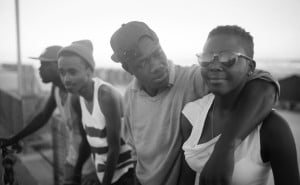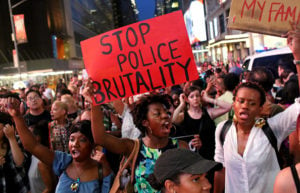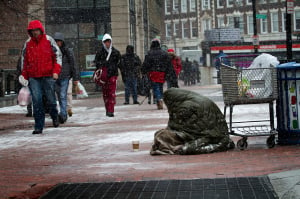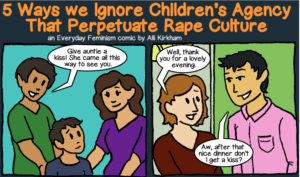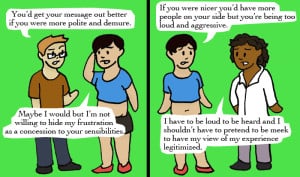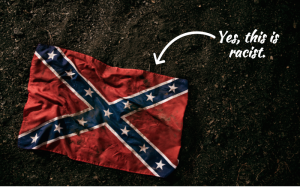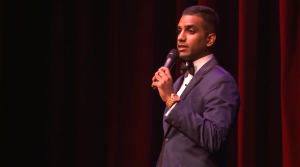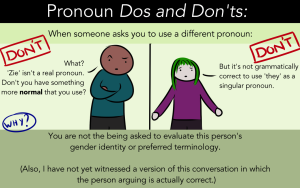“I do not know a Blackness that isn’t queer. I never have, never will, and never could separate the two even if I tried.”
I wrote the above in response to an article by a colleague in which he argued the merits of centering his Black identity before his gay identity. I understood where he was coming from then, and perhaps even more so now.
For him, gay identity was so often taken over by white gay men that he felt the need to reassert his Blackness, so forcefully, perhaps, that it pushed his sexuality to the back-burner.
But I believe it is vitally necessary to hold all of my identities in the same hand at all times, and remain convinced that they are each always affecting my lived experience. Though maybe less obviously depending on the context, all aspects of who I am play an equitably important role in bringing the whole picture together. In fact, they affect one another so much that none can really be understood on its own.
My Blackness, for example, is only understood as Black through how I have encountered it as a queer person in America.
Everything I know about Blackness has been interpreted through that lens.
This is what intersectionality really is – not parsing out separate identities and lining them beside or in front of each other, but knowing that all parts of us are always connected and informing one another.
Recently, though, it has become almost impossible to ignore the level at which white LGBTQIIA+ folks, white women and white gender non-conforming people have taken over gender/sexuality identities.
In their activism and in asserting their identity, marginalized white people continuously try to force people of color into their mold and then chastise us for not fitting — all the while demanding solidarity.
For example, both Madeline Albright and Gloria Steinem, widely considered (white) feminist icons, last week demonized (all) women who don’t support Hillary Clinton’s White House bid, with Albright proclaiming “there’s a special place in hell for women who don’t support other women,” and Steinem suggesting that young women support Bernie Sanders simply to meet boys.
I can most certainly imagine even some white women have better reasons than boys to refuse to support a candidate simply because they are also a white woman.
More importantly, though, this insistence on unconditional solidarity from women of color, whose gendered struggles may not be represented by Clinton, is indicative of a far more sinister issue upon which my colleague touched.
In the minds of many white people, gender and sexuality belong to them alone — they get to define it, set its parameters and make themselves the default, then demand support for that default.
Black women, for instance, are supposed to not even consider how the Clintons’ policies have harmed them significantly in the past because of a shared “womanhood?”
But the issue is that “womanhood” isn’t shared cross-culturally any more than “motherhood” is shared across families. Yes, the relationships between you and your mother and me and mine have at least some similarities, but my relationship with my mother is unique from yours.
She still may be a mother and you still might deal with some of the same things that come up when dealing with a mother, but I will never be your mother’s child — though this doesn’t negate the importance of the fact that we are both someone’s child, or that motherhood means something different for an adopted child than for me, or that my relationship to my mother may be more positive or negative than even my siblings’ relationship even while we are all her children.
Though intersectionality is becoming more widely understood and the problems with white feminism are being increasingly deconstructed, we still haven’t gotten to the root of the problem.
White gender and sexuality aren’t even nearly the same thing as my gender and sexuality, and the differences can’t be glossed over any more than the “my” in “my mother” can.
White queer folks benefit from the “gay rights” movement focusing on “marriage equality” in ways that I do not.
White male-perceived folks benefit from their gender presentation in the workplace in ways that I do not.
White queer folks benefit from blaming Black communities when “gay rights” fail on the ballot, though that doesn’t even acknowledge my existence.
Gender operates vastly differently across race. Here are 4 reasons this should always be acknowledged.
1. Unless An Ethnicity Is Specified, Whiteness Is Always the Default — And That’s A Problem
A few days ago, I had a good laugh with a friend about something I noticed when writing about racial issues for a certain publication. In each of the edits sent back to me, whenever “person” or “people” was added to my language, they never specified “white,” though that was always to whom the sentence would sensibly refer if following my argument.
As evidenced by when Dan Savage spread the lie that the Black community was the reason Proposition 8 failed in 2008, making white the default means the humanity of many nonwhite people doesn’t even register. If “the Black community” can hate “queer people” with no nuance, what about Black queer people? It’s as if they don’t exist.
This is dangerous on so many levels.
For one, it means that the issues affecting nonwhite queer people specifically are never addressed, and if queerantagonism only affects white people, who needs to care about queer people of color?
Secondly, it means the things that might honestly benefit white people while inversely affecting their counterparts of color go unanalyzed. Hillary Clinton becoming president might be a breakthrough for white women, but what about the harm her policies might do that are specific to women of color?
Bayna-Lehkiem El-Amin became the target of gay rights activists’ hatred, under the guise of “activism,” after being seen on video hitting a white gay man with a chair in New York City, even as his own queerness was noted and he claimed self-defense.
Eventually, full video of the incident proved he was attacked first, but the same “gay” media outlets that had so demonized him without considering a racial element never picked the story back up. In fact, many of them never remarked on his sexuality in the first place.
This is because “gay rights” basically means “white gay rights,” and when it came down to a choice between supporting a white gay man and Black one, “gay rights” had already picked at side.
If we always name race when discussing these issues, we can avoid the problem of white becoming the default and make its harm less easy to disguise.
2. White Concepts of Gender/Sexuality Categories Do Not Always Fit for POC
I’ve been doing a lot of public exploration of my gender and sexuality recently. It’s been a wonderfully beautiful and enlightening experience.
However, a few weeks back I was reprimanded by a white queer person for claiming “queer” when they thought I was only interested in men (untrue and irrelevant) and for claiming to be non-binary when (to them) I was perceived as a man.
Because of the previously mentioned problem of white being the default, many people assume that gender and sexuality are only determined when it matches what white people know it to be. If white never needs to be specified, it must be the most legitimate and everything else is an aberration.
Real women vote like white women. Real queer folk fuck like queer white folk. Real gender looks like what white people perceive it to be.
But gender is expressed differently across race and always has been.
Regardless of “shared” gender and sexuality, we are affected by different things, perceived differently and move through the world in different ways.
Cultures that existed before European colonization looked at questions of gender and sexuality through a lens unfamiliar to many now, and that means that ideas of gender and sexuality exist outside of the Eurocentric imagination. Allowing white to be the default limits gender and sexuality to a very incomplete imagination.
By always recognizing race with gender and sexuality, we are better able to expand those concepts to cover all of the different, beautiful and important ways we exist.
3. POC Are Blamed For Not Fitting Into These White-Centric Categories
What that white person said as he pushed back against my identity was that without ascribing to how they viewed gender and sexuality, I was “taking up space” in their community.
This was through no fault of my own, I am queer and non-binary even if this person couldn’t perceive it.
But not fitting into their perception of what that means was reason enough for them to attack me — and that is a violent appropriation of sexuality and gender justice.
Similarly, women of color with perfectly good reason not to automatically find solidarity with white women are told they are not “feminists” and that “there is a special place in hell” for them by the likes of Albright and Steinem.
This is part of the reason why Womanism was created, with Black women becoming fed up with being told their feminism must look exactly like white feminism for them to really care about gender based oppressions.
Along with intersectionality, all these ideas point to the same thing: gender is raced and race is gendered (and classed – this shouldn’t be forgotten either), and therefore we should always be aware that they exist simultaneously.
This person was correct, I do not fit into their idea of queerness, but that’s because my queerness is Black.
Queerness absolutely does show up in different ways across cultures, and acknowledging this is not only a recognition of simple reality, but also a necessary affirmation that this reality is okay.
4. Gender/Sexuality Solidarity Is Demanded from POC Without Reciprocation
As Twitter user Margi Nowak reminded us, Gloria Steinem and Madeline Albright never chastised women for not backing Shirley Chisholm, the first Black woman Presidential candidate in 1972. In fact, they never even campaigned with her.
Black queer people in California were called homophobes when Prop 8 failed without even being acknowledged by people like Dan Savage, what to speak of actually having him campaign for the issues that affected them most. Even while being blamed and ignored, they were supposed to unquestioningly support those blaming and ignoring them.
Trans women of color are supposed to cheer along with Caitlyn Jenner as she loudly supports conservative policies and organizations most fatal to them.
When gender and sexuality are default and default is white, Whiteness doesn’t even need to be mentioned in order to take precedence.
All our issues are tied in with theirs, but none of theirs need be tied in with ours.
This doesn’t mean that the issues affecting white people in marginalized communities based on their gender or sexuality aren’t important. In fact, those issues are tied in with ours. But it does mean that the centering of the multiply marginalized is most important. If anything should be default when talking oppression, it should be the most affected by it.
By naming race with gender and sexuality, we can better point to those whose issues have gone ignored and better support and amplify their voices.
***
Language is important. Too often when things aren’t mentioned we take them for granted, and taking the reality that gender is always raced and vice versa for granted has proven very dangerous.
I could make the case that all identities should be spoken together, and in many ways this is a case for that, barring impracticality. But at the very least, we should always be cognizant of the ways the different aspects of us exist simultaneously, and take great measure to prevent forgetting.
[do_widget id=’text-101′]
Hari Ziyad is a Contributing Writer for Everyday Feminism and a Brooklyn-based storyteller. They are the Editor in Chief of RaceBaitR, a space dedicated to imagining and working toward a world outside of the white supremacist cisheteropatriarchal capitalistic gaze, and their work has been featured on Gawker, The Guardian, Out, Ebony, Mic, Colorlines, Paste Magazine, Black Girl Dangerous, Young Colored and Angry, The Feminist Wire, and The Each Other Project. They are also an assistant editor for Vinyl Poetry & Prose. You can find them (mostly) ignoring racists on Twitter @RaceBaitR and Facebook.
Search our 3000+ articles!
Read our articles about:
Our online racial justice training
Used by hundreds of universities, non-profits, and businesses.
Click to learn more


